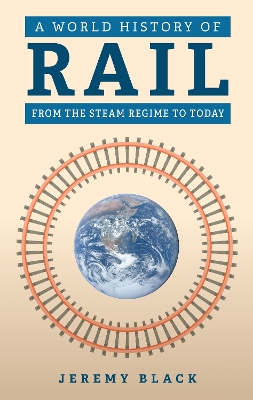There were 20,000 miles of railways in 1865 and about a million by 2020. Scale has always been a key theme in railway history. In the First World War, the London and North West Railway transported 325,000 miles of barbed wire and over twelve million pairs of army boots. At the end of the twentieth century, Indian Railways sold 4.5 billion tickets annually. With his renowned ability to take the long view of any subject and bring it into sharp focus for the reader, Jeremy Black examines how rail transformed the world. While always shaped by commercial interests, the role of the railway was (and is) strategic in the broadest sense: like Roman roads and Chinese canals, it helped develop the economic links that sustained and strengthened the major powers. For example, the railway was fundamental in integrating the frontiers of settlement with the world economy, in the spread of cultivation and ranching, and in the exploitation of mining opportunities. Rail expanded the ‘logistical space’ of most states.
To give one modern example of the political importance of rail, Ukraine’s railway is on the 1.52 metre gauge, rather than the 1.435 metre one used in Poland and most of Europe. In 2022, Denys Shmyhal, Ukraine’s Prime Minister, declared that the railways there would be rebuilt to the European gauge. This enhanced capability would counter the Russian ability to blockade Ukraine’s Black Sea ports, notably Odessa. The plan was not endorsed by the Kremlin…
- ISBN10 1398121010
- ISBN13 9781398121010
- Publish Date 15 December 2023
- Publish Status Active
- Publish Country GB
- Imprint Amberley Publishing
- Format Hardcover
- Pages 288
- Language English
